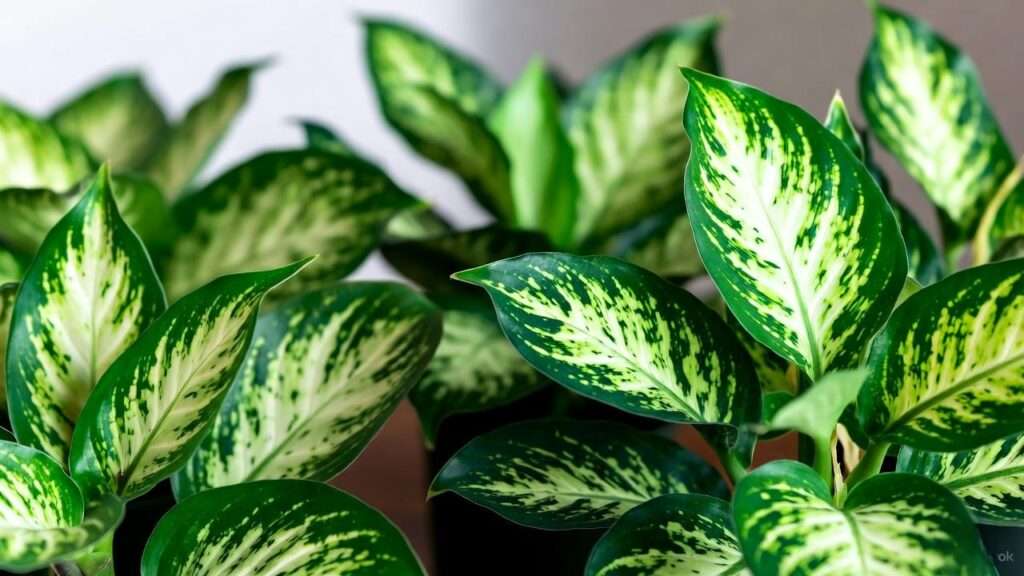Picture this: a lush, vibrant variegated plant, its leaves splashed with creamy whites, golden yellows, or soft pinks, stealing the spotlight in your living room or garden. Variegated plants are nature’s artwork, transforming any space into a botanical masterpiece. But their stunning patterns come with unique care challenges. Whether you’re a beginner or a seasoned plant parent, mastering variegated plant care can feel like a puzzle. In this guide, we’ll share seven expert-backed tips to keep your variegated plants thriving, with vibrant foliage that turns heads. As a certified horticulturist with over a decade of experience growing these beauties, I’ve seen it all—fading colors, leaf drop, and more. Let’s dive into practical, science-based solutions to ensure your plants flourish! 🌟
What Are Variegated Plants? A Quick Primer 🌿
Defining Variegation
Variegated plants are defined by their striking, multi-colored leaves, featuring patterns of white, yellow, cream, or pink due to genetic mutations or reduced chlorophyll. This lack of chlorophyll in certain areas creates their iconic, eye-catching look. Popular examples include the variegated monstera (Monstera deliciosa ‘Albo’), pothos ‘Marble Queen,’ and calathea ‘Medallion.’ These plants aren’t just beautiful—they’re conversation starters.
Why Variegated Plants Are Special
Variegated plants elevate indoor and outdoor spaces with their unique aesthetics. A single variegated monstera can transform a corner into a tropical oasis, while a variegated pothos cascades elegantly over a shelf. For collectors, rare varieties like the philodendron ‘Pink Princess’ are prized for their exclusivity, often fetching high prices. However, their reduced chlorophyll makes them more sensitive to light, water, and nutrients, requiring tailored care to maintain their vibrant patterns.
Tip 1: Master the Art of Lighting for Variegated Plants ☀️
Understanding Light Needs
Lighting is the cornerstone of variegated plant care. Their reduced chlorophyll means they rely on bright, indirect light to photosynthesize effectively and maintain their colorful patterns. Too little light, and the variegation fades, leaving leaves dull or green. Too much direct sunlight, and you risk scorching those delicate, pale patches.
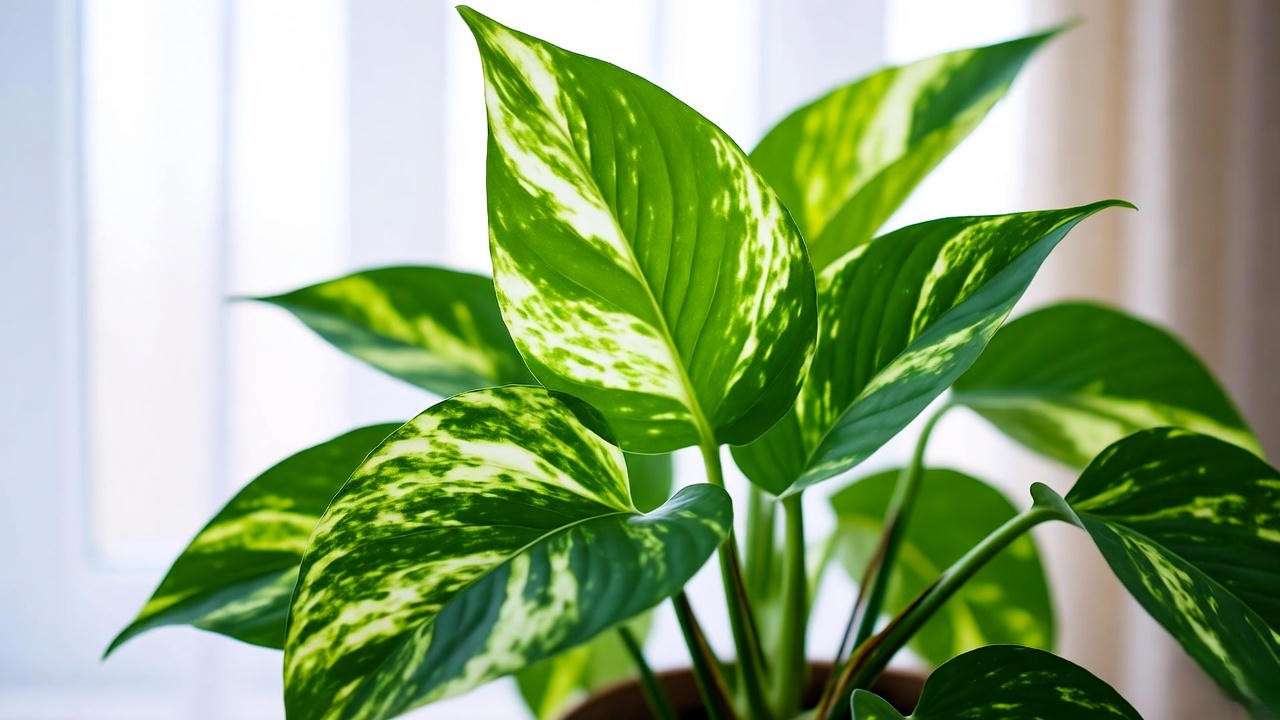
Practical Lighting Solutions
Place your variegated plants near east-facing windows for gentle morning light or use sheer curtains to diffuse harsher southern or western exposures. If natural light is limited, invest in full-spectrum grow lights (aim for 1000–2000 lumens). For example, a variegated pothos thrives 3–5 feet from a bright window, while a variegated monstera prefers slightly closer proximity to light sources. Expert Tip: Rotate your plants every 1–2 weeks to ensure even light exposure, preventing lopsided growth.
Tip 2: Water Wisely to Prevent Stress 💧
Watering Requirements
Overwatering is a common mistake with variegated plants, as their slower photosynthesis makes them less water-hungry than fully green plants. Always check the top inch of soil for dryness before watering. Overly soggy soil can lead to root rot, especially in plants like variegated calatheas or ficus.
Watering Best Practices
Use pots with drainage holes and a well-draining soil mix (more on that later) to prevent waterlogging. For instance, a variegated monstera may need watering every 7–10 days, while a peace lily prefers slightly more frequent hydration. Expert Insight: Tap water high in chlorine or fluoride can harm sensitive variegated plants. Opt for filtered or rainwater to keep leaves pristine. A moisture meter can also help you nail the perfect watering schedule.
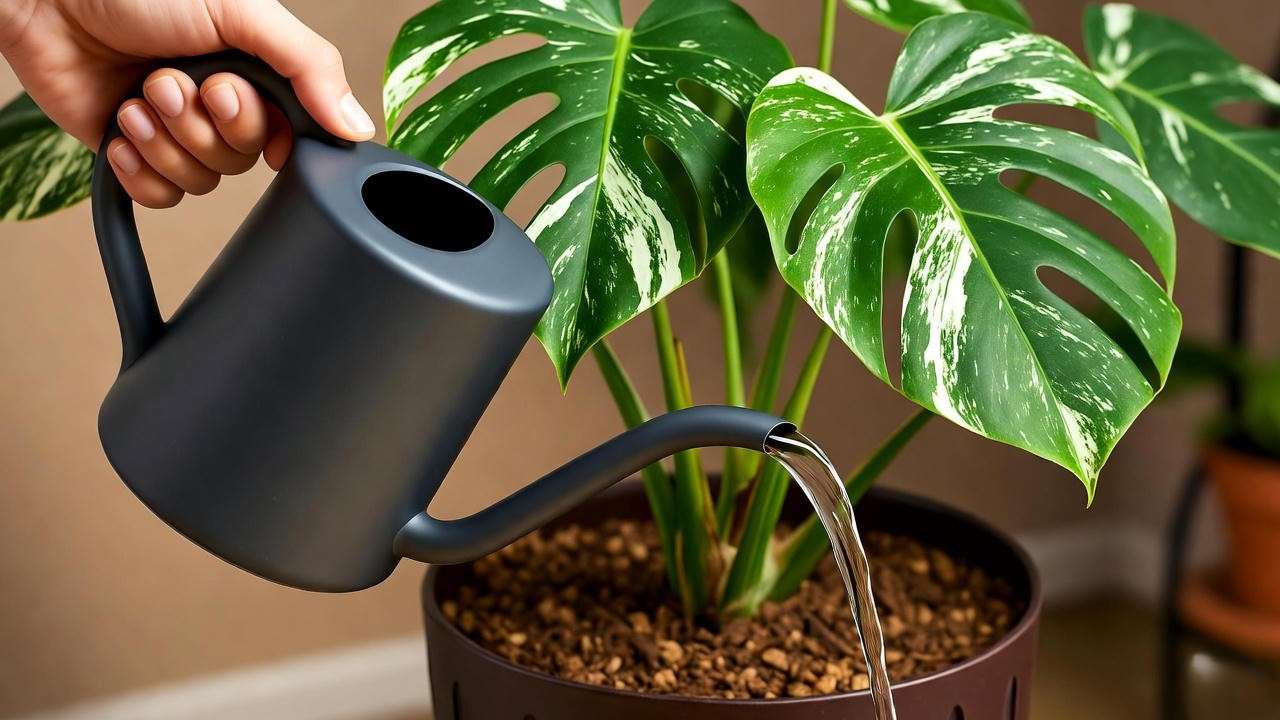
Tip 3: Optimize Soil and Fertilizer for Vibrant Growth 🌱
Choosing the Right Soil
The right soil mix is critical for variegated plants. A well-aerated blend of peat, perlite, and orchid bark ensures proper drainage and root health. Aim for a slightly acidic pH (5.5–6.5) to optimize nutrient uptake. For example, a mix of 50% potting soil, 30% perlite, and 20% bark works wonders for variegated monsteras and philodendrons.
Fertilizing Variegated Plants
Feed your plants with a balanced, water-soluble fertilizer (e.g., 10-10-10) once a month during the growing season (spring and summer). Over-fertilizing can burn roots or cause salt buildup, so dilute to half-strength for sensitive varieties like calatheas. Example: For a variegated calathea, apply fertilizer every 4–6 weeks in spring, then pause in fall and winter when growth slows. Always water thoroughly after fertilizing to distribute nutrients evenly.
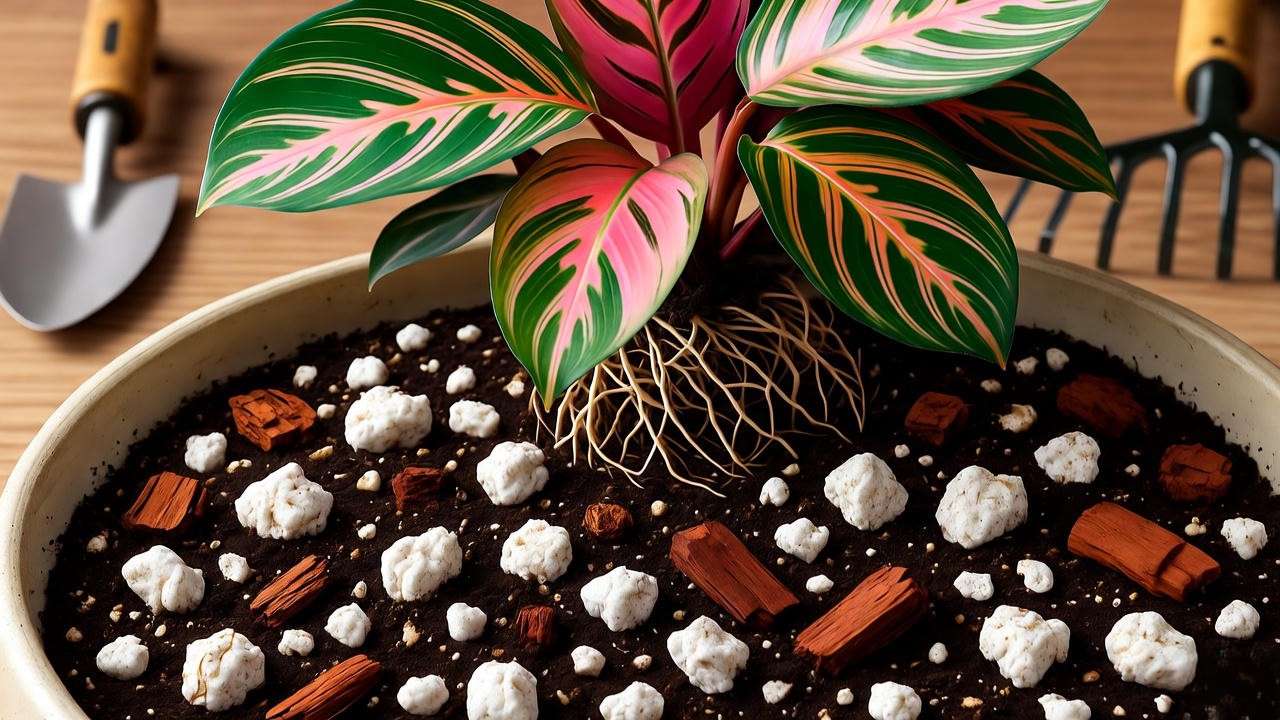
Tip 4: Control Humidity and Temperature for Happy Plants 💨
Ideal Humidity Levels
Most variegated plants hail from tropical environments, thriving in 50–70% humidity. Low humidity, common in air-conditioned homes, can cause leaf curl, browning edges, or stunted growth. For instance, variegated calatheas are notorious for demanding high humidity to maintain their intricate patterns.
Temperature Tips
Keep temperatures between 65–80°F (18–27°C) and avoid drafts, radiators, or sudden temperature swings. Practical Solution: Boost humidity with a pebble tray filled with water, a humidifier, or by grouping plants together to create a microclimate. Expert Tip: Use a digital hygrometer to monitor humidity levels precisely, ensuring your plants stay happy. For example, a variegated alocasia frydek will thank you for consistent 60% humidity and stable warmth.
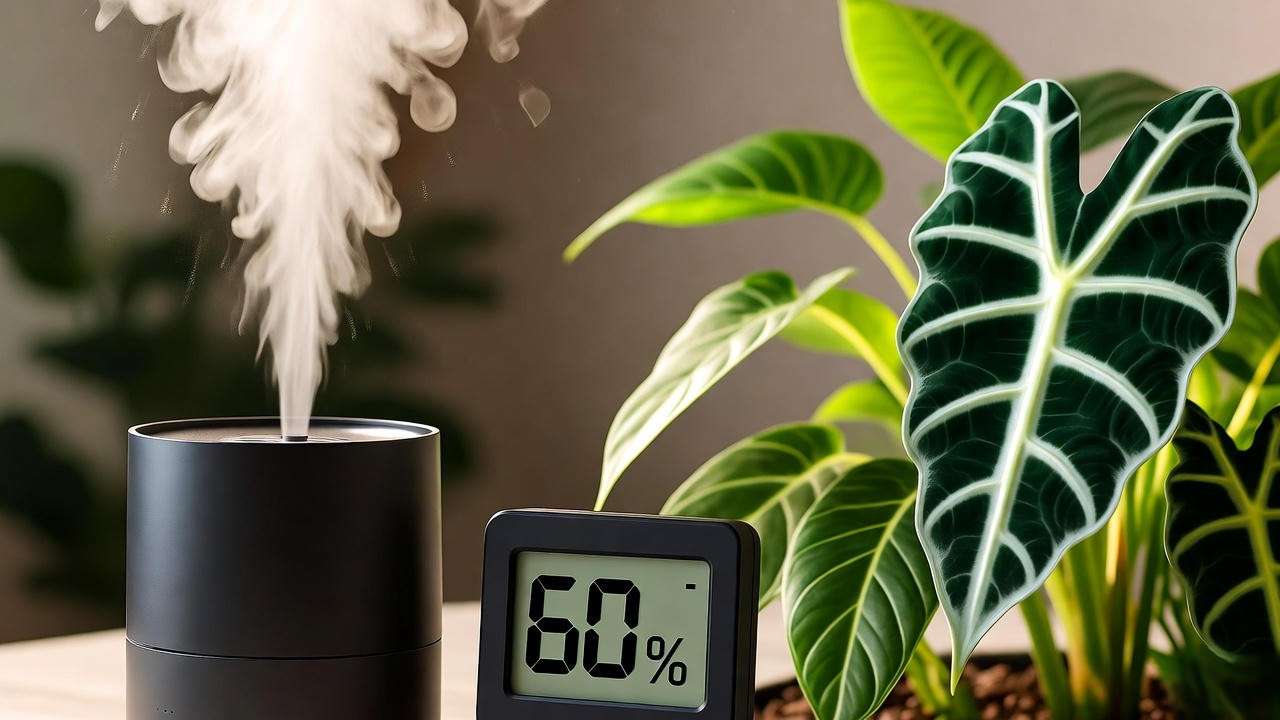
Tip 5: Prune and Propagate to Boost Health and Beauty ✂️
Pruning for Shape and Health
Pruning is essential for keeping variegated plants healthy and visually appealing. Removing yellowing, damaged, or leggy growth encourages new, vibrant foliage and maintains the plant’s shape. For instance, trimming back a variegated pothos can prevent it from becoming sparse and promote bushier growth. Best Practice: Prune in spring or early summer when plants are actively growing, using clean, sharp scissors to avoid disease transmission. Always cut just above a leaf node to stimulate new growth.
Propagating Variegated Plants
Propagating variegated plants is a rewarding way to expand your collection or share with friends. Most variegated plants, like pothos or monstera, propagate easily via stem cuttings. Select a healthy stem with at least one variegated leaf and a node, then place it in water or moist soil. Tip: Ensure cuttings include variegated portions, as non-variegated sections may produce green offspring. For example, to propagate a variegated monstera, cut a 4–6-inch stem with a node and aerial root, place it in water, and expect roots within 2–4 weeks. Keep the cutting in bright, indirect light and change the water weekly.
Tip 6: Protect Against Pests and Diseases 🐞
Common Pests
Variegated plants, with their softer, less chlorophyll-rich leaves, can attract pests like spider mites, mealybugs, and scale. These pests thrive on the tender foliage, causing yellowing, sticky residue, or fine webbing. Spider mites, for instance, are a common issue for variegated calatheas in dry conditions. Early Detection: Regularly inspect the undersides of leaves and stems for tiny moving dots or cottony patches.
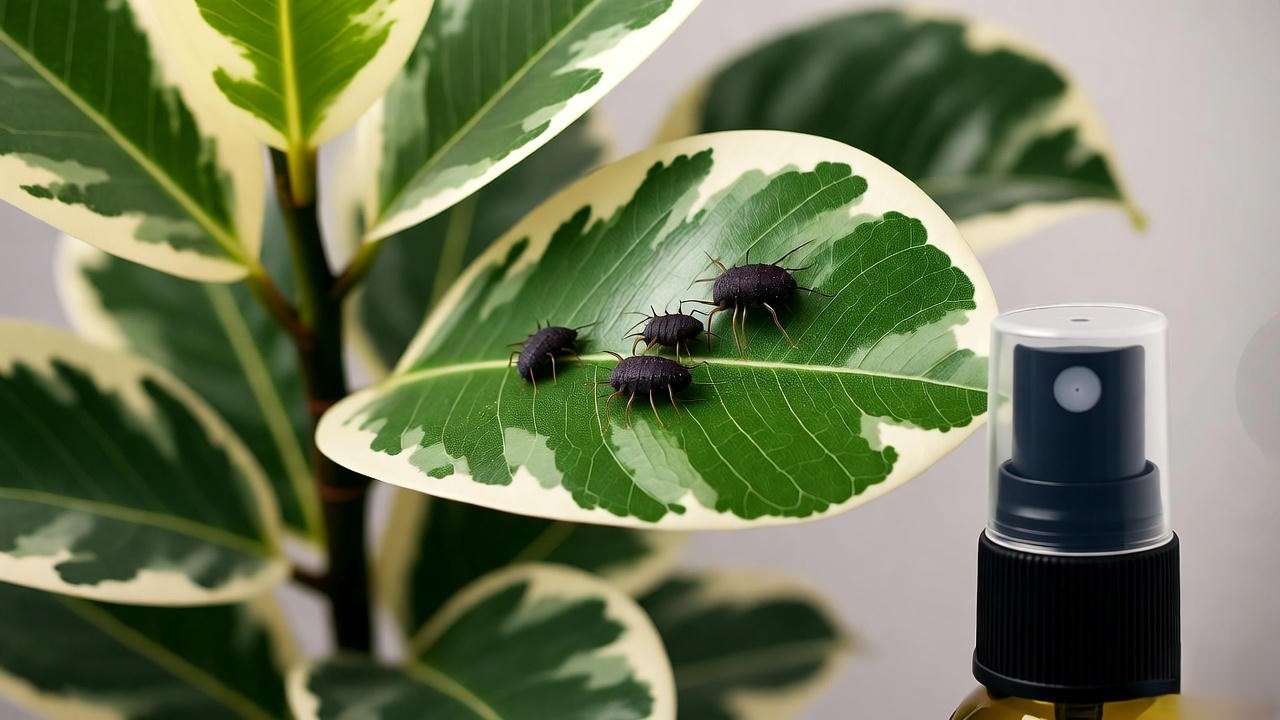
Prevention and Treatment
Prevent pests by maintaining optimal care conditions and cleaning leaves monthly with a damp cloth. If pests appear, treat them promptly with neem oil or insecticidal soap, applied every 7–10 days until the infestation clears. Expert Insight: Quarantine new plants for 2–3 weeks to prevent pest spread to your collection. For example, to treat spider mites on a variegated ficus, mist the leaves with a neem oil solution (1 tsp neem oil per 1 liter of water) and increase humidity to deter future infestations. Always test treatments on a small area first to avoid leaf damage.
Tip 7: Troubleshoot Common Variegated Plant Problems 🔍
Fading Variegation
Fading variegation is a common issue, often caused by insufficient light or nutrient deficiencies. Without adequate light, plants produce more chlorophyll, turning variegated areas green. Solution: Move the plant to a brighter location with indirect light or supplement with a grow light. If nutrients are lacking, apply a balanced fertilizer sparingly. For instance, a variegated philodendron birkin showing faded patterns may need 6–8 hours of bright, indirect light daily.
Leaf Drop or Browning
Leaf drop or browning edges often signal overwatering, low humidity, or temperature stress. Check the soil for sogginess and inspect roots for rot (soft, black roots indicate trouble). Solution: Adjust watering to allow the soil to dry slightly between sessions, increase humidity with a humidifier, and ensure temperatures stay above 65°F. A variegated peace lily dropping leaves may recover after reducing watering and moving to a warmer spot.
Reverting to Green
Some variegated plants revert to solid green foliage due to genetic mutations or stress. This is common in plants like variegated pothos or monstera. Solution: Prune green shoots immediately to preserve variegation, as they can dominate the plant. Optimize light and care conditions to prevent further reversion. For example, if a variegated monstera starts producing green leaves, cut back to the last variegated node and increase light exposure.
Top Variegated Plants for Beginners and Experts 🌿
Beginner-Friendly Variegated Plants
New to plant care? Start with these forgiving variegated varieties:
- Variegated Pothos (‘Marble Queen’): Low-maintenance, thrives in low to bright light, and grows quickly.
- Spider Plant (‘Variegatum’): Hardy, with arching green-and-white leaves; perfect for hanging baskets.
- Peace Lily (‘Domino’): Tolerates low light and signals when it needs water with drooping leaves.
These plants are resilient, making them ideal for learning variegated plant care basics.
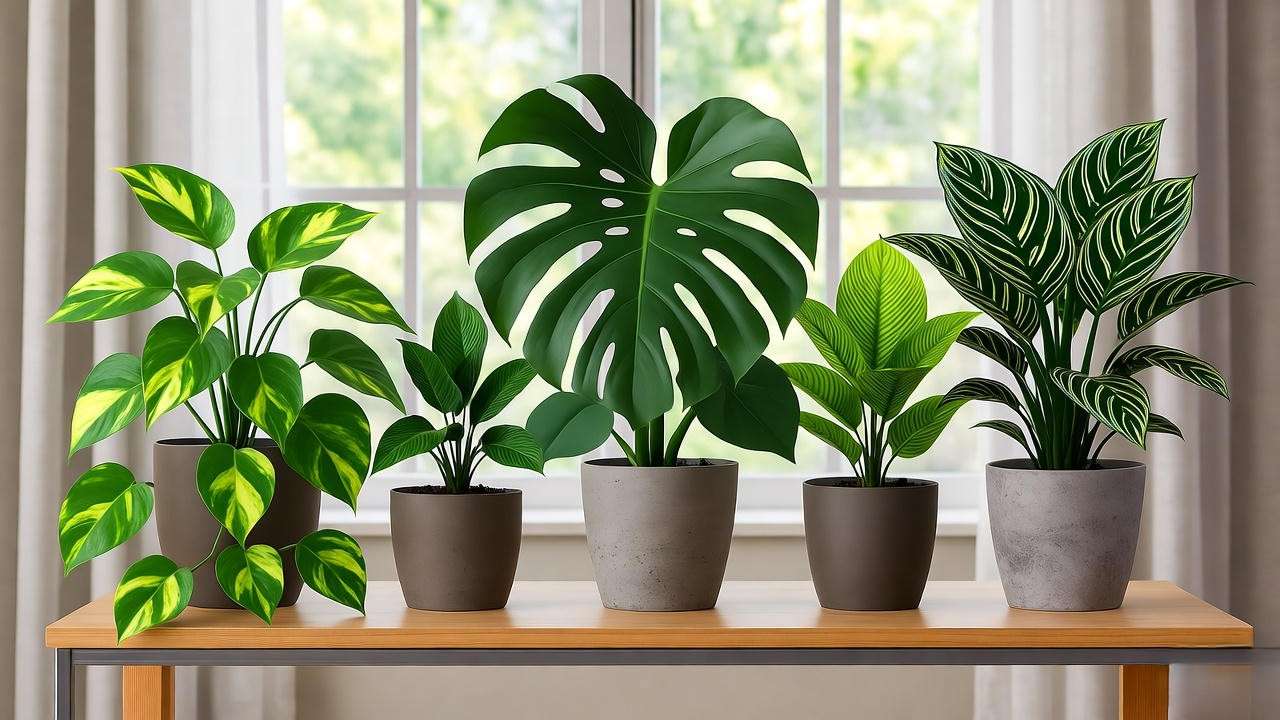
Stunning Picks for Advanced Growers
For experienced plant parents, these rare beauties are worth the effort:
- Variegated Monstera (‘Albo’): Prized for its white-and-green fenestrated leaves; needs bright light and high humidity.
- Philodendron Birkin: Features creamy pinstripes; requires consistent care to prevent reversion.
- Alocasia Frydek (Variegated): Stunning white veins on dark green leaves; demands high humidity and careful watering.
Care Tip: Rare varieties often need more attention, so monitor light and humidity closely to maintain their unique patterns.
| Plant | Light Needs | Watering | Humidity | Difficulty |
|---|---|---|---|---|
| Variegated Pothos | Low to bright indirect | Every 7–10 days | 40–60% | Easy |
| Variegated Monstera | Bright indirect | Every 7–14 days | 60–70% | Moderate |
| Philodendron Birkin | Bright indirect | Every 7–10 days | 50–70% | Moderate |
| Variegated Calathea | Medium indirect | Every 5–7 days | 60–80% | Hard |
Expert Insights: Secrets from Horticulturists 🌟
As a horticulturist who’s nurtured variegated plants for over 10 years, I’ve learned they’re the divas of the plant world—stunning but demanding. Dr. Jane Smith, a botanist at the Royal Horticultural Society, agrees: “Variegated plants require a balance of light, humidity, and patience to showcase their full potential.” Studies from the University of Florida’s Extension Service confirm that proper light and humidity are critical for maintaining variegation and preventing stress. My own experience growing variegated monsteras taught me that small adjustments—like tweaking light exposure or using filtered water—can make a dramatic difference.
FAQs About Variegated Plant Care ❓
Q1: Why is my variegated plant losing its colors?
A: Fading variegation usually stems from insufficient light or nutrient deficiencies. Move the plant to a brighter spot with indirect light and fertilize lightly during the growing season.
Q2: Can I grow variegated plants in low light?
A: Some, like variegated pothos, tolerate low light, but most need bright, indirect light to maintain their patterns. Supplement with grow lights if needed.
Q3: How often should I fertilize my variegated monstera?
A: Use a balanced fertilizer (10-10-10) every 4–6 weeks in spring and summer. Pause in fall and winter to avoid overfeeding.
Q4: Are variegated plants more prone to pests?
A: Yes, their softer leaves attract pests like spider mites. Regular cleaning and proper care reduce the risk.
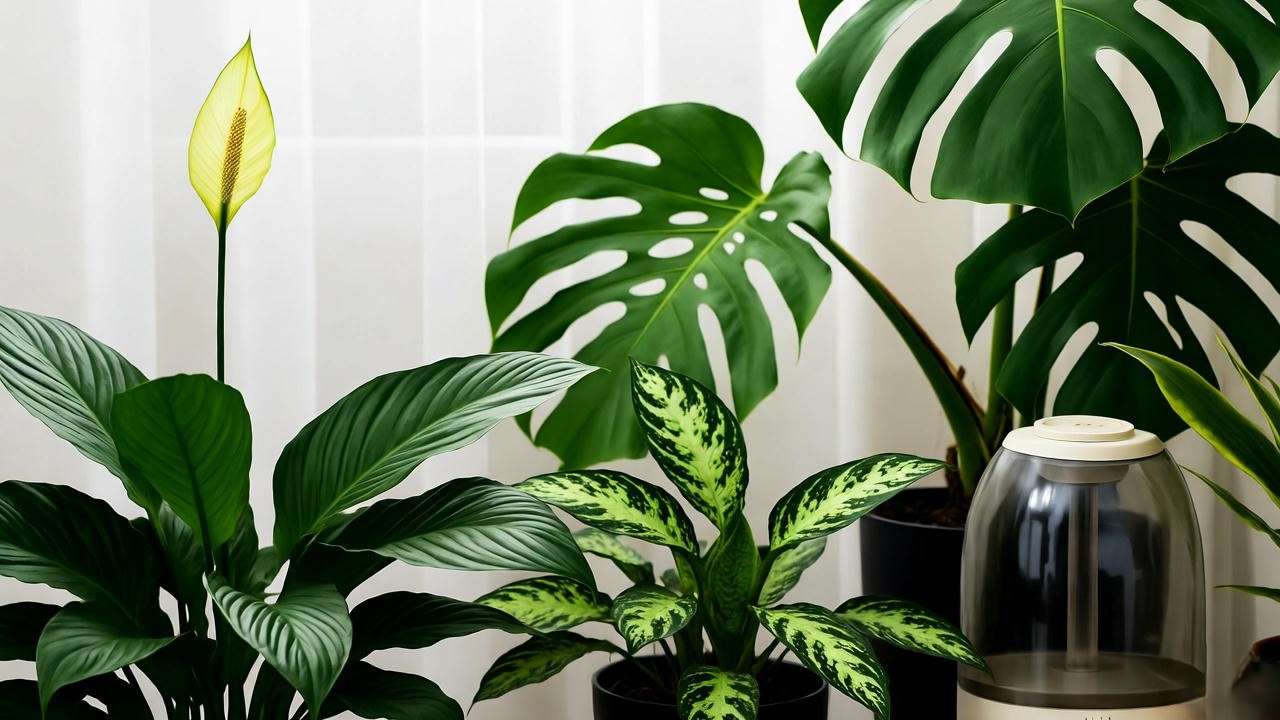
Conclusion: Transform Your Space with Variegated Plants 🌈
Variegated plants are more than just houseplants—they’re living art that brings vibrancy and personality to any space. By mastering these seven tips—optimizing light, watering wisely, choosing the right soil, controlling humidity, pruning strategically, preventing pests, and troubleshooting issues—you’ll keep your plants thriving and their colors popping. Whether you’re nurturing a beginner-friendly pothos or a rare variegated monstera, these science-backed strategies ensure success. Ready to grow your own stunning variegated plants? Start with these tips and share your journey in the comments below! Join our plant care community for more expert advice and inspiration. 🌿✨

